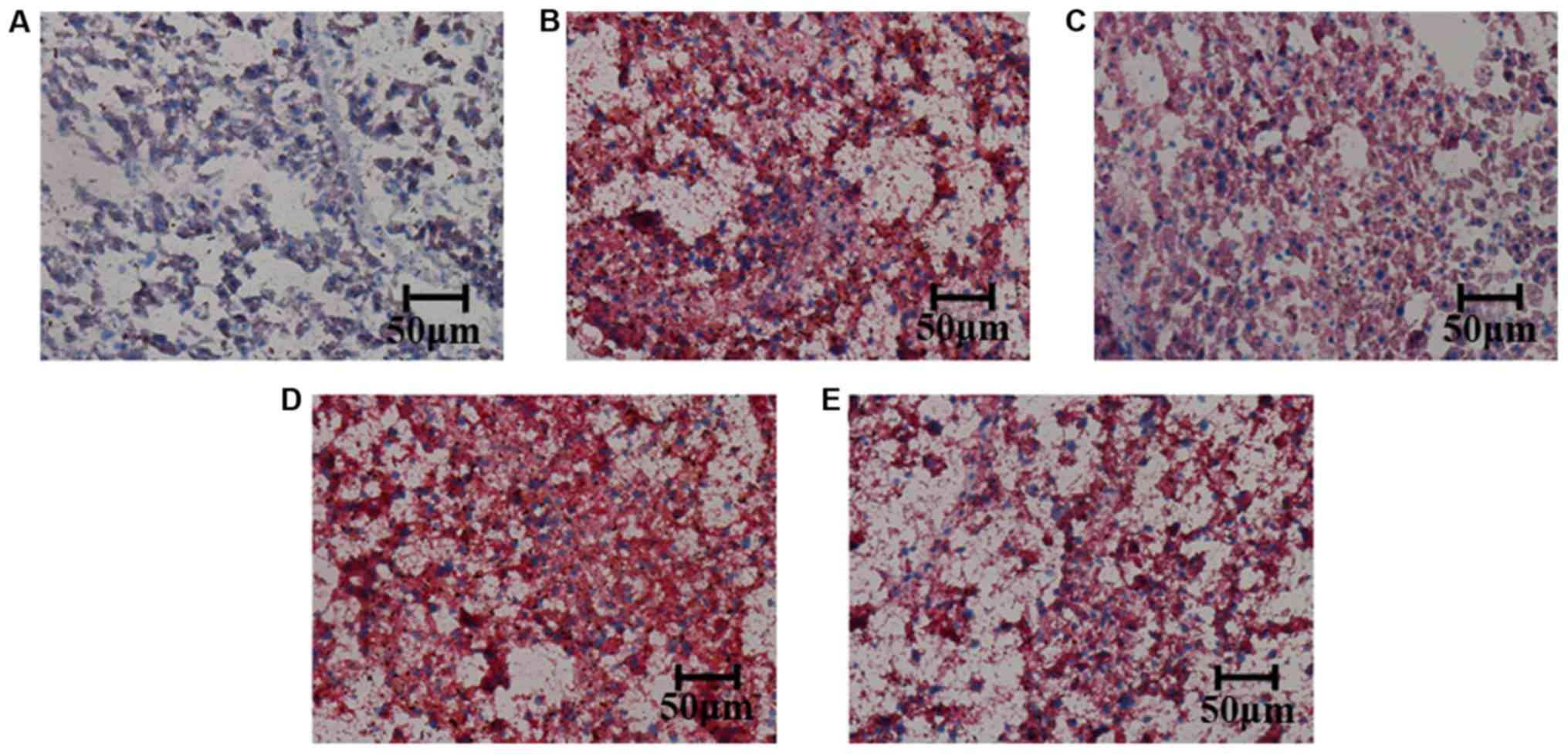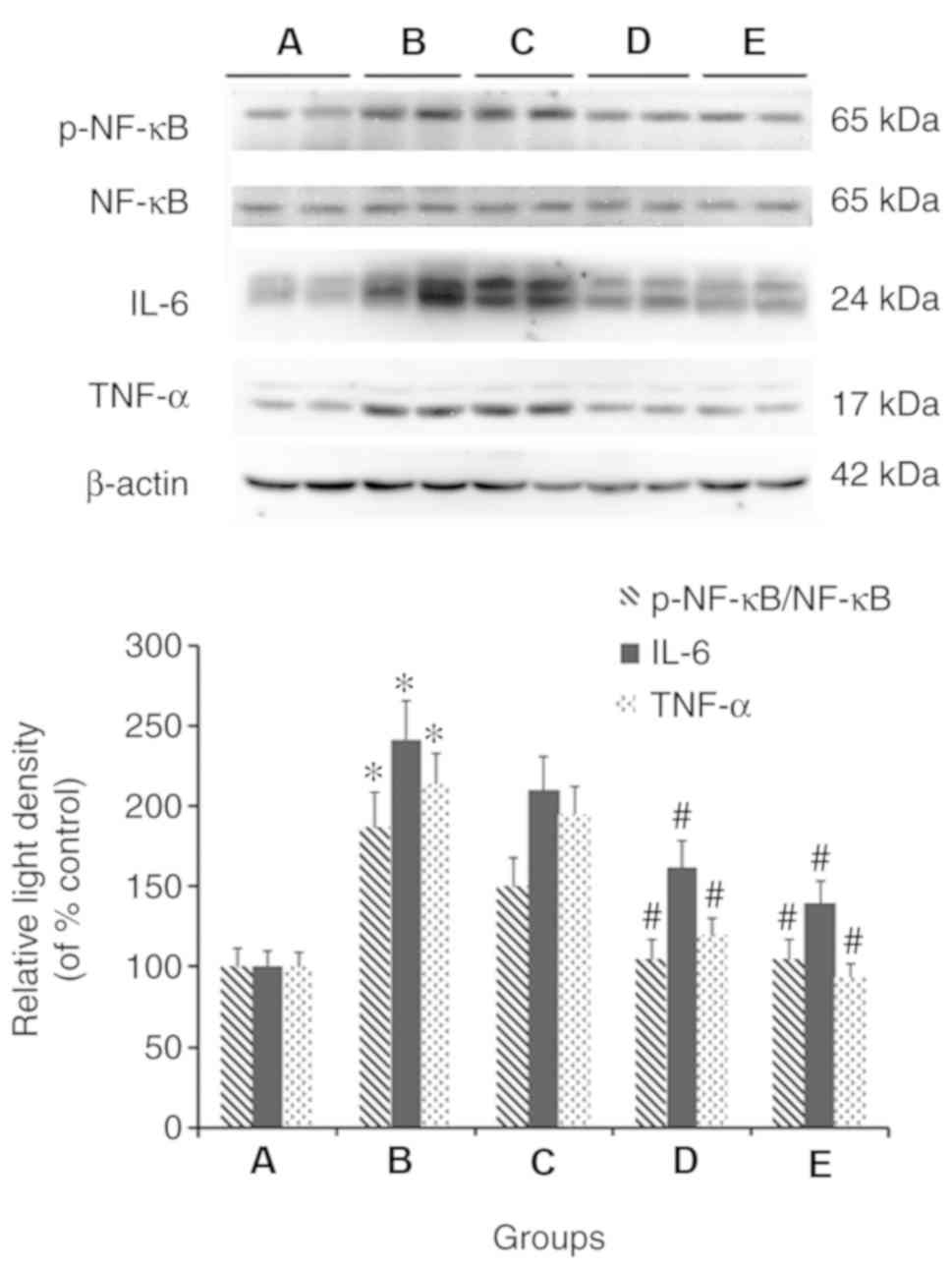|
1
|
Ghaemi A, Hosseini N, Osati S, Naghizadeh
MM, Dehghan A, Ehrampoush E, Honarvar B and Homayounfar R: Waist
circumference is a mediator of dietary pattern in non-alcoholic
fatty liver disease. Sci Rep. 8:47882018. View Article : Google Scholar : PubMed/NCBI
|
|
2
|
Komazaki R, Katagiri S, Takahashi H,
Maekawa S, Shiba T, Takeuchi Y, Kitajima Y, Ohtsu A, Udagawa S,
Sasaki N, et al: Periodontal pathogenic bacteria, Aggregatibacter
actinomycetemcomitans affect non-alcoholic fatty liver disease by
altering gut microbiota and glucose metabolism. Sci Rep.
7:139502017. View Article : Google Scholar : PubMed/NCBI
|
|
3
|
Torres DM, Williams CD and Harrison SA:
Features, diagnosis, and treatment of nonalcoholic fatty liver
disease. Clin Gastroenterol Hepatol. 10:837–858. 2012. View Article : Google Scholar : PubMed/NCBI
|
|
4
|
Schröder T, Kucharczyk D, Bär F, Pagel R,
Derer S, Jendrek ST, Sünderhauf A, Brethack AK, Hirose M, Möller S,
et al: Mitochondrial gene polymorphisms alter hepatic cellular
energy metabolism and aggravate diet-induced non-alcoholic
steatohepatitis. Mol Metab. 5:283–295. 2016. View Article : Google Scholar : PubMed/NCBI
|
|
5
|
Schuppan D and Schattenberg JM:
Non-alcoholic steatohepatitis: Pathogenesis and novel therapeutic
approaches. J Gastroenterol Hepatol. 28 (Suppl 1):S68–S76. 2013.
View Article : Google Scholar
|
|
6
|
Ekstedt M, Franzén LE, Mathiesen UL,
Thorelius L, Holmqvist M, Bodemar G and Kechagias S: Long-term
follow-up of patients with NAFLD and elevated liver enzymes.
Hepatology. 44:865–873. 2006. View Article : Google Scholar : PubMed/NCBI
|
|
7
|
Schattenberg JM and Schuppan D:
Nonalcoholic steatohepatitis: The therapeutic challenge of a global
epidemic. Curr Opin Lipidol. 22:479–488. 2011. View Article : Google Scholar : PubMed/NCBI
|
|
8
|
Yeom GG, Min S and Kim SY:
2,3,5,6-Tetramethylpyrazine of Ephedra sinica regulates
melanogenesis and inflammation in a UVA-induced
melanoma/keratinocytes co-culture system. Int Immunopharmacol.
18:262–269. 2014. View Article : Google Scholar : PubMed/NCBI
|
|
9
|
Ran X, Ma L, Peng C, Zhang H and Qin LP:
Ligusticum chuanxiong Hort: A review of chemistry and pharmacology.
Pharm Biol. 49:1180–1189. 2011. View Article : Google Scholar : PubMed/NCBI
|
|
10
|
Shao Z, Wang L, Liu S and Wang X:
Tetramethylpyrazine protects neurons from oxygen-glucose
deprivation-induced death. Med Sci Monit. 23:5277–5282. 2017.
View Article : Google Scholar : PubMed/NCBI
|
|
11
|
Gong X, Ivanov VN, Davidson MM and Hei TK:
Tetramethylpyrazine (TMP) protects against sodium arsenite-induced
nephrotoxicity by suppressing ROS production, mitochondrial
dysfunction, pro-inflammatory signaling pathways and programed cell
death. Arch Toxico. 89:1057–1070. 2015. View Article : Google Scholar
|
|
12
|
Kleiner DE, Brunt EM, Van Natta M, Behling
C, Contos MJ, Cummings OW, Ferrell LD, Liu YC, Torbenson MS,
Unalp-Arida A, et al: Design and validation of a histological
scoring system for nonalcoholic fatty liver disease. Hepatology.
41:1313–1321. 2005. View Article : Google Scholar : PubMed/NCBI
|
|
13
|
Staroń R, Van Swelm RP, Lipiński P,
Gajowiak A, Lenartowicz M, Bednarz A, Gajewska M, Pieszka M,
Laarakkers CM, Swinkels DW and Starzyński RR: Urinary hepcidin
levels in iron-deficient and iron-supplemented piglets correlate
with hepcidin hepatic mRNA and serum levels and with body iron
status. PLoS One. 10:e1366952015. View Article : Google Scholar
|
|
14
|
Wei J, Zhen YZ, Cui J, He FL, Shen T, Hu
G, Ren XH and Lin YJ: Rhein lysinate decreases inflammation and
adipose infiltration in KK/HlJ diabetic mice with non-alcoholic
fatty liver disease. Arch Pharm Res. 39. 960–969. 2016.
|
|
15
|
Rinella ME: Nonalcoholic fatty liver
disease: A systematic review. JAMA. 313:2263–2273. 2015. View Article : Google Scholar : PubMed/NCBI
|
|
16
|
Fujii H and Kawada N: Inflammation and
fibrogenesis in steatohepatitis. J Gastroenterol. 47:215–225. 2012.
View Article : Google Scholar : PubMed/NCBI
|
|
17
|
Morrison MC, Kleemann R, van Koppen A,
Hanemaaijer R and Verschuren L: Key inflammatory processes in human
NASH are reflected in Ldlr−/−. Leiden mice: A
translational gene profiling study. Front Physiol. 9:1322018.
View Article : Google Scholar : PubMed/NCBI
|
|
18
|
Henkel J, Alfine E, Saín J, Jöhrens K,
Weber D, Castro JP, König J, Stuhlmann C, Vahrenbrink M, Jonas W,
et al: Soybean oil-derived poly-unsaturated fatty acids enhance
liver damage in NAFLD induced by dietary cholesterol. Nutrients.
10(pii): E13262018. View Article : Google Scholar : PubMed/NCBI
|
|
19
|
Hebbard L and George J: Animal models of
nonalcoholic fatty liver disease. Nat Rev Gastroenterol Hepatol.
8:35–44. 2011. View Article : Google Scholar : PubMed/NCBI
|
|
20
|
Hayden MS and Ghosh S: Regulation of NF-κB
by TNF family cytokines. Semin Immunol. 26:253–266. 2014.
View Article : Google Scholar : PubMed/NCBI
|
|
21
|
Abd El-Kader SM, Al-Shreef FM and
Al-Jiffri OH: Biochemical parameters response to weight loss in
patients with non-alcoholic steatohepatitis. Afr Health Sci.
16:242–249. 2016. View Article : Google Scholar : PubMed/NCBI
|
|
22
|
Kastl L, Sauer SW, Ruppert T, Beissbarth
T, Becker MS, Süss D, Krammer PH and Gülow K: TNF-α mediates
mitochondrial uncoupling and enhances ROS-dependent cell migration
via NF-κB activation in liver cells. FEBS Lett. 588:175–183. 2014.
View Article : Google Scholar : PubMed/NCBI
|
|
23
|
Blaser H, Dostert C, Mak TW and Brenner D:
TNF and ROS crosstalk in inflammation. Trends Cell Biol.
26:249–261. 2016. View Article : Google Scholar : PubMed/NCBI
|
|
24
|
Montezano AC and Touyz RM: Reactive oxygen
species and endothelial function-role of nitric oxide synthase
uncoupling and Nox family nicotinamide adenine dinucleotide
phosphate oxidases. Basic Clin Pharmacol Toxicol. 110:87–94. 2012.
View Article : Google Scholar : PubMed/NCBI
|
|
25
|
Togo M, Konari N, Tsukamoto M, Kimoto R,
Yamaguchi T, Takeda H and Kambayashi I: Effects of a high-fat diet
on superoxide anion generation and membrane fluidity in liver
mitochondria in rats. J Int Soc Sports Nutr. 15:132018. View Article : Google Scholar : PubMed/NCBI
|





















